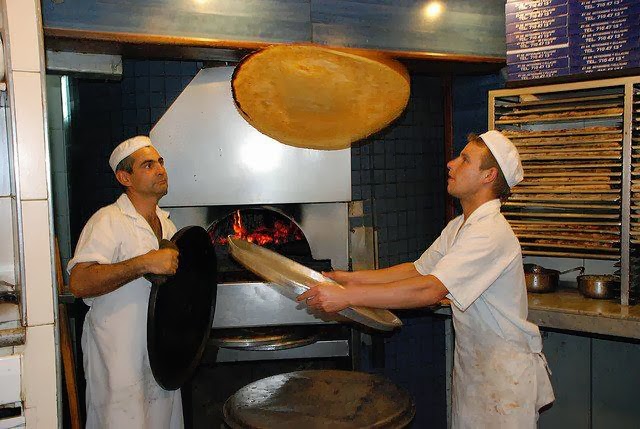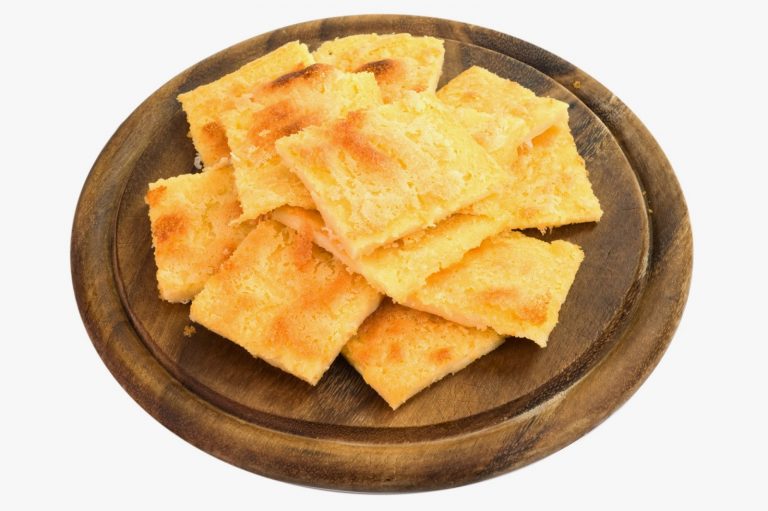Fainá, a crunchy, thin, bread made from chickpea flour is a hugely popular accompaniment to pizza in Uruguay and Argentina.
Fainá is served in slices alongside pizza and is made to be set on top of the pizza as a crunchy top layer. That’s right – it’s a chickpea wafer served on top of pizza. It’s a gluten-free, multicultural treat which is a simple upsell item made from inexpensive ingredients – chickpea flour, water, oil and salt. Would you like some fainá with that?
I spoke with Irene, a pizza enthusiast and former colleague from Uruguay who lives in Oxford, MS, home of PMQ Pizza Magazine, about the fainá she grew up with in Uruguay’s capital, Montevideo.
“When I was growing up, I thought all Italian restaurants sold fainá,” says Irene. “It wasn’t until much later that I went abroad and realized this wasn't true.” In fact, the bread is not classically Italian or Uruguayan, but from the city of Genova, located in the Ligurian region of Italy.
The dish came to Uruguay along with the waves of Italian immigrants who came to Argentina and Uruguay at the turn of the 20th Century, populating much of the two Spanish-speaking countries with Italian people, cuisine and traditions.
Irene points out that the Ligurian immigrants were proud of their local specialties such as fainá and reproduced them in the New World. Fainá still exists in Liguria to this day, as farinata. Its name in Genovese dialect, fainâ, suggests that it was implanted directly from Genova into the Southern Cone.
In Uruguay, pizza is a food shared among a large family or group of friends. It’s most commonly served as pizza a la pala, which is a very long pizza, about a yard or so, which is cut into many small slices for the group. Below you see two Uruguayans making some fainá (flipping not required, but it certainly looks cool). Photo courtesy of Los Yoruguas de aqui y de alla.

Pizza in Uruguay is kept simple, usually just dough with tomato sauce (called a pizza) or dough, sauce and cheese (a muzzerella). Getting your pizza a caballo, or “horse-backed,” means you want your pizza served up with that crispy chickpea bread, fainá.
“It doesn’t really taste like anything,” says Irene. "It’s more about the added texture. Uruguayans just add a dash of pepper on top." In Argentina, it’s not uncommon to add a variety of toppings, treating it more like a focaccia bread.” Irene says that fainá reminds her of home and getting together with the people she loves. When friends come from Uruguay she frequently requests a package of fainá mix that she can make in her conventional oven. The times that Irene has had American guests over to try fainá they seemed to like it. “All I know is, whenever I make it, it's gone,” says Irene.”
A friend of Irene's passed along the below recipe for fainá. Though it's best baked in a pizza oven, the recipe looks like it was made for a conventional oven. I would just use whatever temperature your oven is normally set to for pizza and cut down the bake time. It requires a large pan to be able to spread out the batter thinly. Chickpea flour can be found in international or health food stores, the rest is easy!
********
Ingredients:
7 ounces of chickpea flour
2.5 cups of water
3 tablespoons of oil
Salt to taste
Directions:
Place the flour and salt in a mixing bowl. Mix while slowly incorporating the water and oil until you have a smooth, uniform mixture without any lumps. Let sit for 15 minutes (other recipes have a resting time from one to several hours) Oil a pan, preferably a round one, and preheat the oven to 350 degrees. Spread the batter so that it’s about 1/2 inch thick. Cook for 30 to 50 minutes or until golden brown.
*********
If you’re looking for a new way to surprise your customers and increase sales with exotic low-cost food items, you may be ready to give fainá a try.
Missy Green is PMQ's international correspondent and blogger at Pizza Without Borders.















